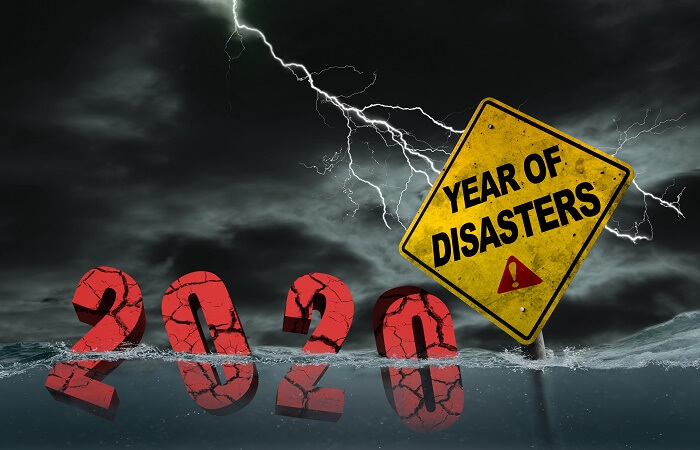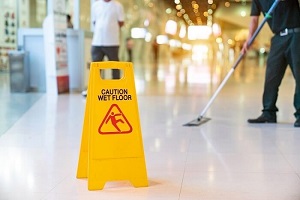Safety Advice that Got You Through the Year
Check out our Top 10 blog posts for 2020.
Check out our Top 10 blog posts for 2020.

When we look back on 2020, it’s easy to see just how important safety became, not just in the usual places we spend our time, but in every corner of our lives. Safety was undeniably the top concern for many as we did everything we could to survive this year while also supporting those around us through the pandemic. The Top 10 most popular posts on Safety First show just how much our focus shifted to new hazards we’ve had to learn to navigate, and the much-needed emphasis on workplace safety. Much may change again in 2021, but for now, here is where 2020 took us on the pages of Safety First.

10. Leading Indicators as Warning Signs
If used correctly, leading indicators can serve as a warning system that an incident or workplace injury may be imminent. Workers are better protected when they are physically, mentally and emotionally well. Health and wellbeing leading metrics identified by the Campbell Institute can help safety professionals and their organizations ensure employee wellbeing programs are working as intended.

9. Healthcare workers’ mental health during COVID-19
While mental health concerns grew more pronounced with COVID-19, they were especially stark for essential workers directly facing the crisis. This year has tested the resilience of healthcare workers on the front lines, and work towards recovery likely will continue long after the pandemic is over.

8. The Importance of signage to prevent slips, trips and falls
This National Safety Month post highlights one of the most recurring workplace safety issues. Slips, trips and falls are the second leading preventable workplace injury resulting in emergency room visits and lost work days. Tony Spearing from Thermo Fisher Scientific seized on how signage can make a big difference in tackling this common safety threat.

7. The Six E’s of Safety - Which is Key?
NSC Chairman Andy Johnson challenged safety professionals to expand the safety experience by incorporating some key elements that help inspire those around us to be safe. Johnson’s post kicked off 2020 (before COVID-19 came on the scene). He shares insights that help develop and sustain a positive and effective workplace safety culture.

6. At-Home Emergency Preparedness and COVID-19
It’s no surprise that a during the year of lockdowns, a post reminding readers to brush up on some key safety skills made the Top 10 list. Natural disasters did not take a break during the pandemic; if anything, weather emergencies across the country made it more important than ever to make a safety plan, stock up on emergency supplies and remind us that it takes people working together to get through the worst disasters.

5. Do Teens Admit to Texting and Driving?
A standout from 2018, this post from current Work to Zero project manager Morgan Cihak had staying power. Teens are more likely to engage in risky behavior, texting and driving included, so it’s no surprise that this examination of the CDC self-reported Youth Risk Behavior Survey found some repeat responses in 2020. With roadway fatalities on the rise again, we could all use a reminder that texting as well as hands-free cellphone use are cognitive distractions for all drivers, no matter how skilled or (in)experienced.

4. COVID-19 and Workplace Implications
When it came to trusted COVID-19 advice, the general public turned to Dr. Fauci at National Institutes of Health (NIH). When it came to workplace safety and the pandemic, that trusted voice was often Dr. Howard at the National Institute of Occupational Safety and Health (NIOSH). Dr. Howard was a frequent speaker and guest presenter during many National Safety Council virtual events during the year, and this straightforward Q&A was a Safety First standout.

3. Surveying Employees During the COVID-19 Pandemic
Although gathering employee feedback regarding safety is always important, in challenging or uncertain times it is especially critical, says NSC senior survey services manager Crystal Cannan. Organizations that conduct surveys in difficult times can often claim a more engaged workforce. What’s more, assessing employee perceptions provides valuable insights and helps rebuild trust and connection; a vital ingredient as many continue to work remotely.

2. Bicycle Safety Statistics May Surprise You
The rise in outdoor activities, and the corresponding peak in vulnerable road user injuries and deaths, became a dangerous scenario even before the pandemic lockdowns made biking so popular. This 2019 guest post from the ThinkFirst National Injury Prevention Foundation kept its Top 10 spot in 2020 as riders continued to venture outside in an attempt to shake out their COVID-onset cabin fever. This post proves that pandemic or not, helmets remain essential when it comes to injury prevention.

1. Food Delivery and Carryout Safety During the COVID-19 Pandemic
This year brought unprecedented advice when it came to staying safe. Wear a mask. Wash your hands. Keep your distance. But if all of our COVID-19 precautions could be boiled down to two words, they would likely be “stay home.” Millions did, and then ordered take-out. This post from Chris Sanew, NSC web content producer and a certified food protection manager, was the undisputed 2020 Safety First blog star. We frequently cover food safety topics, but none caught on quite like this one. Turns out nothing brings us together like food, even during a pandemic.
With a century-long legacy, the National Safety Council is a global center for safety expertise. Let's work together to align resources. We look forward to learning about ways we can join efforts to expand safety everywhere!
There are no items in your cart